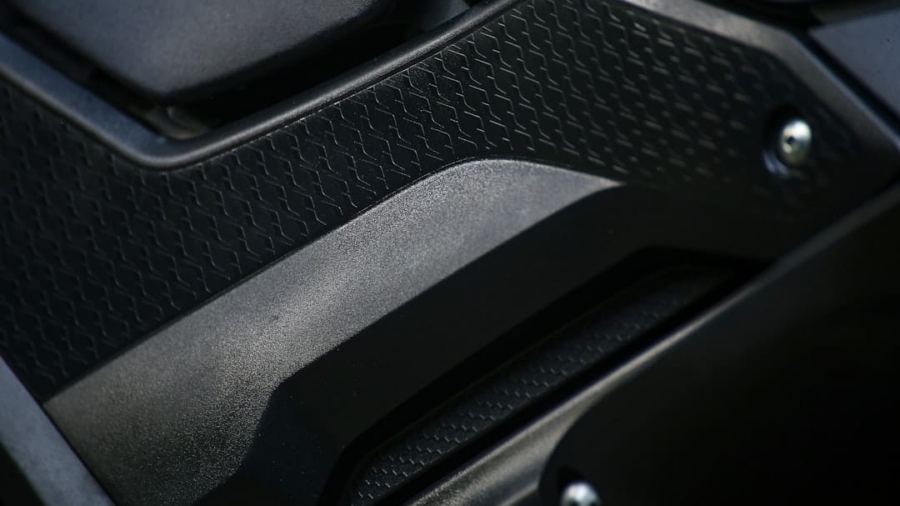Smart materials are a class of materials that possess the ability to respond dynamically to external stimuli, such as temperature, pressure, electric fields, and magnetic fields. These materials can change their properties in a reversible manner, making them highly versatile for various applications across multiple industries. The concept of smart materials encompasses a wide range of substances, including shape memory alloys, piezoelectric materials, and thermochromic materials.
Their unique characteristics allow them to adapt to changing environments, which is particularly beneficial in fields that require high levels of precision and reliability, such as aerospace engineering. In the context of spacecraft design, smart materials offer innovative solutions to some of the most pressing challenges faced by engineers and scientists. The harsh conditions of space—extreme temperatures, radiation exposure, and microgravity—demand materials that not only withstand these environments but also enhance the performance and longevity of spacecraft.
As the aerospace industry continues to push the boundaries of exploration, the integration of smart materials into spacecraft design is becoming increasingly essential. This article delves into the challenges of building durable spacecraft, the role of smart materials in addressing these challenges, and the future potential of these materials in space exploration.
Key Takeaways
- Smart materials are materials that can change their properties in response to external stimuli, such as temperature, stress, or magnetic fields.
- Building durable spacecraft is challenging due to the harsh conditions of space, including extreme temperatures, radiation, and micrometeoroids.
- Smart materials play a crucial role in spacecraft design by providing self-healing, self-sensing, and adaptive capabilities to withstand the harsh conditions of space.
- Examples of smart materials used in spacecraft include shape memory alloys, piezoelectric materials, and self-healing polymers.
- Using smart materials in spacecraft design can lead to benefits such as increased durability, reduced maintenance, and improved performance in space exploration missions.
Challenges in Building Durable Spacecraft
Temperature Fluctuations
Spacecraft are subjected to drastic temperature fluctuations as they orbit celestial bodies or travel through the vacuum of space. Temperatures can soar to over 250 degrees Fahrenheit when exposed to direct sunlight and plummet to minus 250 degrees Fahrenheit in the shadow of a planet. Such extremes can lead to material fatigue and failure if not properly managed.
Radiation Exposure
Another significant challenge is radiation exposure. Spacecraft are bombarded by cosmic rays and solar radiation, which can degrade materials over time. This degradation can compromise structural integrity and lead to failures in critical systems.
Overcoming the Challenges of Space
The vacuum of space presents its own set of challenges, including outgassing—a process where volatile components evaporate from materials, potentially contaminating sensitive instruments or affecting propulsion systems. Engineers must consider these factors when selecting materials for spacecraft construction, ensuring they can withstand not only the physical stresses but also the chemical and environmental challenges posed by space.
The Role of Smart Materials in Spacecraft Design
Smart materials play a pivotal role in addressing the challenges associated with spacecraft durability. Their inherent ability to respond to environmental changes allows for innovative design solutions that enhance performance and reliability.
When heated above a certain threshold, these alloys can return to a predetermined shape, enabling precise movements without the need for complex mechanical systems. Moreover, piezoelectric materials can convert mechanical stress into electrical energy, providing a means for energy harvesting in spacecraft. This capability is particularly valuable in remote missions where power sources are limited.
By integrating smart materials into structural components, engineers can create self-sensing systems that monitor stress and strain in real-time, allowing for proactive maintenance and reducing the risk of catastrophic failures during missions. The adaptability of smart materials not only enhances the functionality of spacecraft but also contributes to overall mission success by improving safety and reliability.
Examples of Smart Materials Used in Spacecraft
Several examples illustrate the application of smart materials in spacecraft design. One notable instance is the use of shape memory alloys in deployable structures such as solar arrays and antennas. NASA’s Mars Exploration Rovers utilized SMAs to deploy their solar panels effectively.
These panels needed to unfold and orient themselves optimally for sunlight exposure after landing on Mars. The SMAs provided a reliable mechanism for deployment that could withstand the harsh Martian environment. Another example is the use of piezoelectric materials in vibration control systems for satellites.
These materials can detect vibrations caused by external forces, such as micrometeoroid impacts or engine thrust variations, and respond by generating counteracting forces. This capability helps maintain stability and precision in satellite operations, ensuring that instruments remain calibrated and functional throughout their missions. Additionally, thermochromic materials have been explored for use in thermal protection systems, where they change color based on temperature fluctuations, providing visual indicators of thermal conditions that could affect spacecraft performance.
Benefits of Using Smart Materials in Spacecraft
The integration of smart materials into spacecraft design offers numerous benefits that extend beyond mere durability. One significant advantage is weight reduction. Traditional materials often require additional components for actuation or monitoring systems, which can add unnecessary weight to a spacecraft.
Smart materials can perform multiple functions within a single component, streamlining design and reducing overall mass—an essential factor in space missions where every ounce counts. Furthermore, smart materials enhance operational efficiency by enabling real-time monitoring and adaptive responses to environmental changes.
For instance, self-healing materials are being developed that can repair minor damages autonomously when exposed to specific stimuli, thereby extending the lifespan of critical components without requiring extensive repairs or replacements during missions.
Future Developments in Smart Materials for Spacecraft
The future of smart materials in spacecraft design is promising, with ongoing research focused on developing new types of materials that offer even greater functionality and resilience. One area of interest is the advancement of self-healing polymers that can repair themselves after sustaining damage from micrometeoroid impacts or other forms of wear and tear. These materials could significantly reduce maintenance needs during long-duration missions, such as those planned for Mars or beyond.
Another exciting development is the exploration of nanomaterials that exhibit enhanced properties at reduced weights. Carbon nanotubes and graphene are being investigated for their potential use in lightweight structural components that maintain strength while offering flexibility and responsiveness to environmental changes. These advanced materials could revolutionize spacecraft design by enabling more efficient structures that can adapt dynamically to varying conditions encountered during missions.
Potential Applications of Smart Materials in Space Exploration
The potential applications of smart materials extend far beyond traditional spacecraft design; they hold promise for various aspects of space exploration. For example, smart textiles embedded with sensors could be used in astronaut suits to monitor vital signs and environmental conditions in real-time. This capability would enhance astronaut safety during extravehicular activities (EVAs) by providing immediate feedback on physiological changes or hazardous conditions.
Additionally, smart materials could play a crucial role in habitat construction on other planets or moons. As humanity looks toward establishing permanent bases on celestial bodies like Mars or the Moon, smart materials could be utilized to create structures that adapt to local environmental conditions—such as temperature fluctuations or radiation levels—ensuring safety and comfort for inhabitants. Furthermore, these materials could facilitate autonomous construction processes using local resources, reducing reliance on Earth-based supplies.
The Impact of Smart Materials on Building More Durable Spacecraft
The integration of smart materials into spacecraft design represents a transformative approach to addressing the myriad challenges faced by engineers in the aerospace industry. By leveraging their unique properties—such as adaptability, self-healing capabilities, and multifunctionality—smart materials enhance not only the durability but also the overall performance and efficiency of spacecraft. As research continues to advance in this field, we can expect even more innovative applications that will redefine our approach to space exploration.
The impact of smart materials extends beyond mere technical enhancements; they embody a paradigm shift in how we conceptualize spacecraft design and operation. As we venture further into the cosmos with ambitious missions aimed at exploring distant planets and beyond, smart materials will undoubtedly play a critical role in ensuring that our spacecraft are not only durable but also capable of adapting to the unpredictable challenges posed by space travel. The future of space exploration is bright with possibilities as we harness the power of these remarkable materials to push the boundaries of human ingenuity and exploration.
In a related article, Unlock the Possibilities with Samsung Galaxy S22, explores the innovative features of the latest smartphone model. Just as smart materials are revolutionizing spacecraft durability, Samsung is pushing the boundaries of technology with their new device. Both articles highlight the importance of cutting-edge materials and technology in advancing various industries.
FAQs
What are smart materials?
Smart materials are materials that have properties that can be altered in a controlled manner, such as shape, stiffness, or conductivity, in response to external stimuli such as temperature, stress, or magnetic fields.
How are smart materials used in spacecraft construction?
Smart materials are used in spacecraft construction to improve durability and performance. They can be used to create self-healing materials, adaptive structures, and materials that can withstand extreme temperatures and radiation in space.
What are the benefits of using smart materials in spacecraft construction?
The benefits of using smart materials in spacecraft construction include increased durability, reduced maintenance, improved performance, and the ability to adapt to changing environmental conditions in space.
What are some examples of smart materials used in spacecraft construction?
Examples of smart materials used in spacecraft construction include shape memory alloys, piezoelectric materials, self-healing polymers, and materials with tunable mechanical properties.
How do smart materials contribute to building more durable spacecraft?
Smart materials contribute to building more durable spacecraft by providing the ability to repair damage, adapt to changing conditions, and withstand the harsh environment of space. This ultimately extends the lifespan and reliability of spacecraft.



